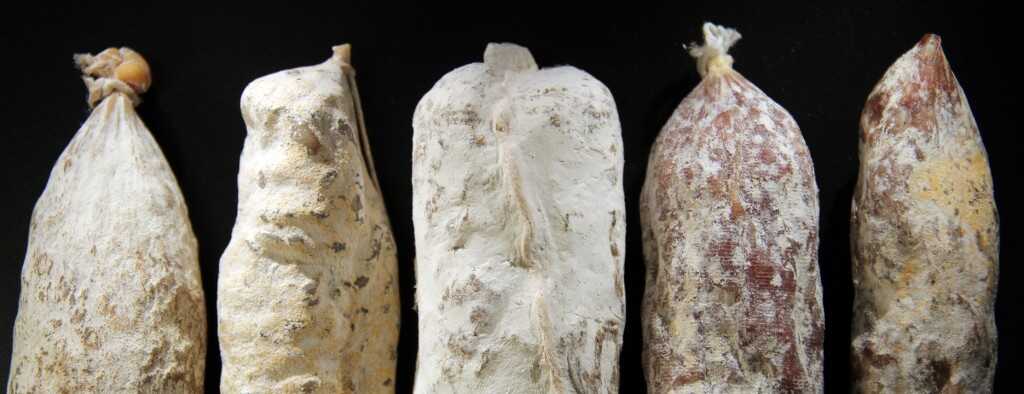
Unintentional mold – which was not added on purpose – in salami and other sausages in general is a negative sign, as its proliferation is very rapid and the vast majority of species have not been studied and produce some type of mycotoxin.
In general, mold is toxic and can produce hepatotoxic, nephrotoxic and carciogenic substances. The majority of species found in salami are of the Penicillium type and are white in color, which is considered a harmless mold, but variants and other species may be present and contaminate the product.
The general rule within delicatessen is that white, smooth mold is safe, any other color change or stringy/hairy or sticky mold should be removed and the entire environment should be cleaned. But not everyone wants to take the risk, so any and all mold can be removed to avoid possible health risks.
In many European countries, such as Italy, products with mold are highly appreciated for their added flavor, but these are countries with tradition and excellence in artisanal manufacturing, in addition the products are monitored and matured for long periods. In Brazil, products are either industrialized, treated with additives and matured for a short time, or they are very rustic and with very little hygienic control. Unfortunately, it is very difficult to find a well-matured product in Brazil.
A fungus often added to salami is Penicillium nalgiovense, which is safe and adds flavor to products aged for prolonged periods. The fungus quickly colonizes the surface, preventing other harmful species from proliferating. Recently scientists from Denmark and Slovenia identified a new fungus found in Italian salami. This new fungus is derived from Penicillium nalgiovense and was named Penicillium salamii. It is a species that is also safe and will possibly be commercially available in the coming years.
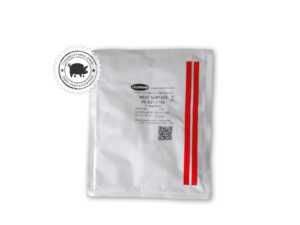
Different species of fungi can produce the same type of mycotoxin, and a single species of fungus can produce more than one type of toxin. The main mycotoxins found in foods are: aflatoxins, fusaric acid, fumonisins, ochratoxins, patulin, citrinin, zearalenone and trichothecenes.
Fungi do not only affect meat products, in fact the FAO – Food and Agriculture Organization of the United Nations – estimates that 25% of all grains produced in the world are contaminated with some type of microtoxin, with aflatoxin being the most common.
What is Aflatoxin?
Aflatoxin is immunosuppressive, mutagenic, teratogenic and carcinogenic. It is produced by certain fungi (mainly Aspergillus) found in food and feed, especially corn and peanuts. It is the best known and studied toxin in the world. Some countries try to regulate exposure to this toxin, requiring that production for consumption be monitored. This prevention is one of the great toxicological challenges of today.
Can mold grow in the fridge?
Yes! Most fungi prefer warm environments, but they can also thrive in cool environments. Mold tolerates environments with a lot of salt and sugar unlike other invaders. Mold can proliferate in refrigerated foods such as jams, salted and cured meats such as ham, bacon, salami and mortadella.
Some known fungi
The list of fungi that can thrive in meat is long, we can mention Alternaria, Aspergillus, Botrytis, Cladosporium, Fusarium, Geotrichum, Monilia, Manoscus, Mortierella, Mucor, Neurospora, Oidium, Oosproa, Penicillium, Rhizopus and Thamnidium.
Mycotoxins in Brazilian legislation
Food sold in Brazil must respect a maximum limit for the presence of mycotoxins, toxic substances produced by fungi and found mainly in grains. This is what determines the Resolution RDC 07/2011, published by ANVISA.
What to do with moldy products?
Below are the USDA recommendations(United States Department of Agriculture) Food Safety and Inspection Service.
Hams, bacon or sausages
DISPOSAL
Foods with high moisture content can become contaminated below the surface. These foods may also contain bacteria along with mold.
Salamis and dry-cured products
CLEAN AND USE
Remove all mold from the surface. It is normal for these naturally drying foods to have mold on the surface, but the dry interior is protected.
Firm vegetables(like cabbage and carrots)
REMOVE AND USE
Cut at least 2.5cm around the mold spot and make sure the knife doesn't go through the mold and contaminate the rest.
Hard cheese
REMOVE AND USE
Cut at least 2.5cm around the mold spot and make sure the knife doesn't go through the mold and contaminate the rest. Store in new plastic wrap. Mold generally does not penetrate deep into these products.
Cheese made with mold(such as Roquefort, blue, Gorgonzola, Brie, Camembert)
DISPOSAL
Discard if they contain molds that are not part of what is traditionally added in production. If they are in hard cheeses (such as gorgonzola), proceed as with hard cheeses (above).
Cooked meat, grains, pasta, soft cheese, yogurt and derivatives, jams, bread and baked goods, legumes, nuts, soft fruits and vegetables(such as cucumber, tomato and peach)
DISPOSAL
Soft, porous and processed foods that contain mold should always go in the trash.
-
 Curing salt 1R$ 8,00
Curing salt 1R$ 8,00 -
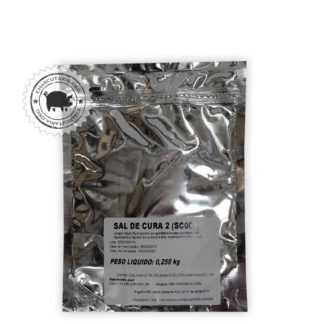 Curing salt 2R$ 8,00
Curing salt 2R$ 8,00 -
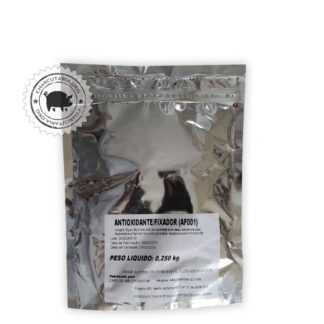 Fixative AntioxidantR$ 23,00
Fixative AntioxidantR$ 23,00 -
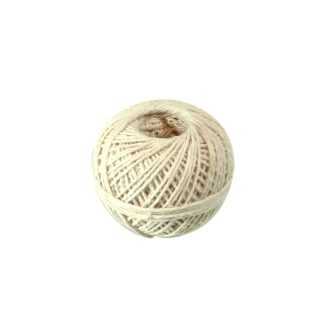 Culinary twineR$ 7,90
Culinary twineR$ 7,90 -
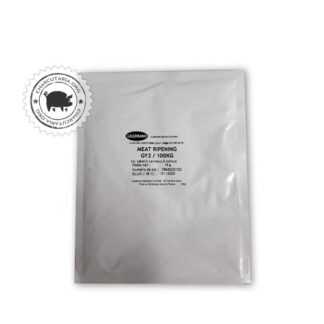 Starter CultureR$ 69,90
Starter CultureR$ 69,90 -
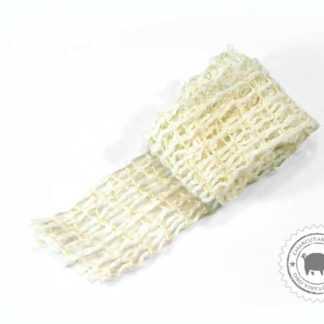 Culinary elastic net 50mmR$ 15,00
Culinary elastic net 50mmR$ 15,00 -
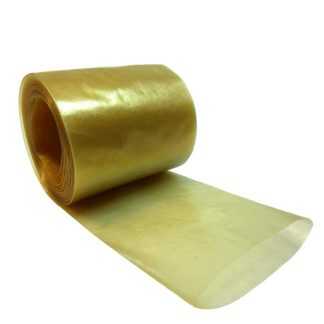 Collagen casing 45mm roll 5 meters salamiR$ 25,00
Collagen casing 45mm roll 5 meters salamiR$ 25,00 -
 Culinary elastic net 65mmR$ 18,00
Culinary elastic net 65mmR$ 18,00 -
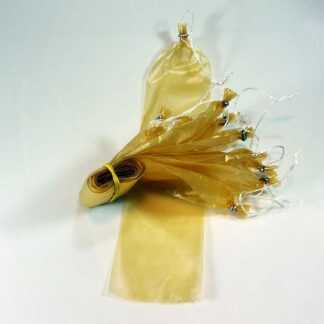 Salami collagen casing 45mm 10 units tiedR$ 22,00
Salami collagen casing 45mm 10 units tiedR$ 22,00 -
 Collagen casing 80mm cup and salamiR$ 29,90
Collagen casing 80mm cup and salamiR$ 29,90 -
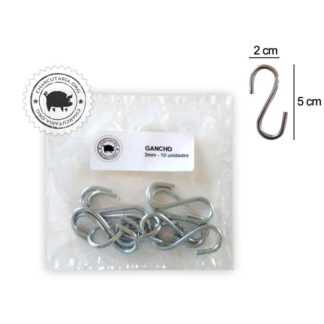 Galvanized HookR$ 12,00
Galvanized HookR$ 12,00 -
 Salami collagen casing 50mm 10 units tiedR$ 24,00
Salami collagen casing 50mm 10 units tiedR$ 24,00


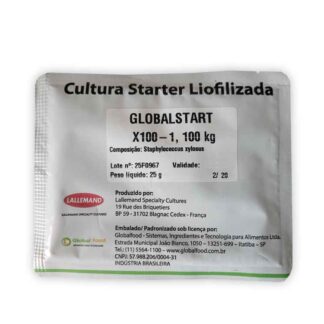

I'm making salamis but they're getting hard on the outside after 7 days and very juicy and tasty on the inside. It's even difficult to cut them because the skin is getting very hard. Will using mold solve this?
Hi Ana. Salami gets a hard rind when it dries too quickly. This usually happens due to a lack of humidity in the environment or too much ventilation affecting the salami. These factors cause exactly what you mentioned: they harden the salami on the outside and keep it very soft/raw in the center. You need to increase the humidity and/or reduce the wind.
Good afternoon, I'm new to charcuterie and I'm trying to make Serrano ham for the second time, I have a refrigerator with temperature and humidity controls, but my ham with 40 days of maturation showed white “cotton” fungus in small pieces and green fungus in another small one. piece, do I do something to remove and clean these pieces? Another thing, I have a curing salami that is completely coated in white, can I place it nearby to help spread the white background in the ham?
Hi Jorge, the white and thinner, smooth mold, as a general rule, is a harmless mold and even positive for helping with flavor and weight loss control, but as you did not apply a specific mold culture, and reported this similarity with the cotton, so it is difficult to say that it is a good mold or some other variation of similar strains, but, as stated, in general, white mold is generally harmless. Regarding the other green spots, you do need to clean them as soon as possible as they can spread. Rub a brush or cloth with a solution of water (200ml), salt (20g) and vinegar (2 tablespoons). Rub the area well to remove and return to the chamber. Repeat if it appears again. If the white mold from the salami migrates to the ham, yes, it will happen, place them close together and they will spread to each other. For the next few years, think carefully about applying a penicilium nalgiovense mold culture, it will cover quickly and give you more peace of mind.
Thank you very much for your answer, I found this site after starting ham, with your tips and products today I would do it differently. Big hug
Good evening, we have been making pork salami for about 10 days at home for our own consumption....but in the first week it started to release a slime when drying and a horrible smell, is that normal? It is very dry now but the smell is still there Not pleasant, what could have happened? Can we let it dry for a few more days and consume it normally?
Hello Andiara. I recommend that you clean the salami by rubbing water with vinegar and salt, this will help remove that smell and protect it. What you can do is smoke a little at a very low temperature (cold smoking) to help even more with the
external protection. Let it dry a little longer by following the procedure I followed, then evaluate whether they are better and the smell has gone away.
Good afternoon! He recommended drying it and putting it back in the box with a screen to dry for how many days to test and see if it hasn't gone bad
Hello... I've been following the channel and website for a few days and decided to put into practice all the knowledge I gained from watching the content and reading. First time making salami and as I realized that using Mold was a better way, I applied it before putting it in the cellar for fermentation. The white mold started to appear, I took a photo just to see if this is how it starts to appear, since in salamis that are older it seems to get drier. I would like some feedback just to know if I'm on the right path. Thank you in advance for your attention and congratulations on the work and content you convey.
Hi Pamela. The development of white mold is correct. Initially it is like this due to the humidity of the salami, then it becomes drier and thinner as the product dries. Follow along and, if you have questions, send a photo again.
Hello, I'm producing salami and it's gathering yellow mold and a little white, what can I do to remove this yellow mold and contain only the white, I'm drying it in a small room with a device that releases wind and a little water, will it be possible? Should I put in an air conditioner?
I'm producing salami for the first time, and after 15 days of maturation in a refrigerator, at a controlled temperature, mold appeared. Is it safe to continue with the process, or should I discard the production?
I am producing a cured, matured ham and something similar to that fungus/yeast/yellow mold that the last product has in the first image started to appear on the pieces. Could it be dangerous or detrimental to processing?
Hi Nayane. There is an immense variety of fungi, each with its own characteristics and substances released. To be safe, the right thing to do would be to ask for a laboratory analysis. When in doubt, it is always recommended to clean the affected area and apply a specific fungal culture, such as penicillium nalgiovense, or an antifungal to inhibit new contamination. To clean, rub with a cloth dampened in water with salt and vinegar.
Thanks!
Luiz Antonio Good afternoon
I'm going to make soppressata salami:
1 – I would like not to use Penicillinium Cultures and starte there is a problem.
2 – How much collagen casing do I need for every 1 kilo of meat
Hi Luiz Antonio.
1) The use of crops is optional, you can do without.
2) It depends on the caliber of intestine, in caliber 45 you will use 3 segments of 30cm of intestine for 1 kg of meat.
Hello!
I would like to know what the characteristic smell would be when salami matures.
I've been maturing for 15 days and I don't smell salami, like the ones I bought.
I'll wait, thank you!
I think there's still little time. Normally, meat is cured. Then in slightly higher humidity, you let the fungi from the purchased culture, or (there is a lot of controversy, from yakult, Kefir, etc.), develop. In that time, at least 20 days have passed. Then comes maturation. The product has to lose 30 % at least. A good salami, three months to deserve the name.
Hello I have a question
I understand that mold establishes itself on the salami rind/skin, but what does it feed on? It can't be from the salami meat as it is coated, so what is it?
Mold feeds on organic matter. Both collagen casing and natural casing have an organic composition.
Hi, I used the solution you recommended to stop the mold but on some pieces it stopped, what should I do, reapply the solution?
The salami is losing an average of 3% per day, is it normal or very fast?
Good morning. Mold does reappear, it is difficult to eliminate completely, you have to remove it until the salami loses more moisture and naturally reduces susceptibility to mold. To completely eliminate mold, you can use potassium sorbate or a mold culture. Regarding weight loss, it appears to be accelerating, but at first the products lose weight more quickly, then it becomes slower as there is less water available. 50-gauge salami, for example, takes about 30 days in total. Thicker salami, with a 60 gauge, for example, takes approximately 60 days. Then you need to evaluate the total time in relation to the loss. Avoid direct wind over the salami and take good care of the humidity, which should always be close to 80%.
Thank you very much, I will follow the tips 👏👏
Good evening, I have been testing a raw ham recipe since 04/22/2021 and today I noticed that a greenish mold appeared. The meat was wrapped in bandages, as per the recipe. I would like to know if this mold compromised the entire process or if there is a way to clean it as the curing time is three months.
Hi Luiz. The bandage hides contamination, I do not recommend using it. You can use collagen or do it without a casing, which also works. As for what to do with mold, it largely depends on how intensely that mold has spread. Some types of mold can release toxins into food. If the infestation was isolated and recent, you can remove it by rubbing with salt water, using a cloth, a brush or your hands. If the infestation is medium, you can slice and discard a layer of the contaminated region. Now, if it is well spread, in this case I recommend that you discard the piece.
Good afternoon,
Can I vacuum pack the salami with the white fungus or do I have to remove it so I can send it in a vacuum?
It certainly can. But maybe people don't understand. There are people who remove the “rind” from Brie and Camenbert cheeses.
How long does it take for the fungus to colonize the salami? I did it almost two weeks ago and nothing has appeared yet. Can I apply again? The salami looks good, just missing the mold.
It usually starts to appear within a week. Mold develops better in more humid environments with lower temperatures. You can apply it again, try to keep the humidity high and the temperature a little higher until the mold takes hold.
Good morning!! When in salami production do I spray mold 600? During fermentation or when putting the salami to ripen?
Hi João, you can apply it right after embedding, during fermentation is a great time for mold to start to proliferate. Mold 600 has the penicilium nalgiovense, correct?
Good morning!
I usually produce some cups and mature them in a refrigerator reserved for that purpose.
In the last batch, a greenish-gray mold appeared.
A sausage producer recommended cleaning with 70% alcohol.
Could you tell me if this practice is recommended?
What we recommend is to clean the cups well with a solution of water (200ml), salt (10g) and vinegar (2 tablespoons). Then hang it again and repeat the operation if the mold appears again. If you want to prevent this type of mold, you can apply a penicillium culture or an antifungal, such as potassium sorbate.
Good afternoon,
I made two coppas, one with cinnamon, clove sugar and the other with rosemary, garlic, etc.
For both I used 2.5% of curing salt.
After the third day it started to show white mold (a few dots), now white mold-like mold (lint) started, and for about 4 days one of the coppa has been showing a bad smell. Today completes 9 days of maturation. They are maturing in the basement of my house at a temperature close to 18º and humidity above 80%. What action can I take?
2.5% or 0.25% of curing salt? On the mold, remove the mold by rubbing a solution of water (200ml), salt (10g) and vinegar (1 tablespoon) on the tops. Remove all mold and rehang. Repeat the process whenever mold appears. To solve the mold problem more efficiently, there are two alternatives: use a penicillium mold culture or use an antifungal, such as potassium sorbate.
Hello Eduardo, I'm starting homemade charcuterie. I made homemade Italian salami with the following formulation: meat 100%; 2% of sugar; 1.5% of salt; garlic powder 1%; curing salt 0.25%; yakult 2.0% and dry seasonings, oregano, pepperoni and kingdom. Today I am in the maturation phase, which I started at the bottom of a conventional refrigerator and after about 7 days, I moved to a wine cellar, with temperature and humidity very close to the recommended parameters, temperature between 12° and 14° and humidity , a little less than 75%. Now, 19 days into maturation, when opening the cellar, another person (I lost taste and smell in a fall) smelled an unpleasant, rotten smell. I immediately opened one of the pieces, it was covered in a white fungus, dry without spores, still, you couldn't see the casing.
Hi Ronald. From the description, white mold is beneficial. The smell should not be rotten, at most a slightly acidic smell from fermentation. Did you use parchment paper?
Hi Eduardo, thanks for the feedback, yes I used tracing paper. I am concerned about the fermentation phase, the only phase of salami production that takes place outside of refrigeration, fermentation that took place for 2/3 days, at a temperature of 20/25 °C, indoors, hanging in a screened cage, used to make sun-dried meat. The RH was uncontrolled, since, here in Rio Grande do Sul, the winter is quite humid. In any case, I washed the pieces with the solution that you recommended to someone in this section, wrapped them again in baking paper and returned to the wine cellar where I am maturing, now, with the control of a thermo-hygrometer. In another week I must complete the maturation, but I'm afraid of tasting it and getting some botulism-type poisoning. What do you suggest? Thanks.
Hi Ronald. With humidity control, you don't need parchment paper, it will only get in the way as it creates an extra barrier which, depending on the paper, can be waterproof. Remove it from the paper and leave it hanging in the cellar. Next time, do it from the beginning without the paper, in the cellar. Botulism comes from bacterial contamination, so mold would not cause this problem. As you used curing salt, it is very unlikely that there was a proliferation of botulism bacteria, as it is one of the pathogens inhibited by curing salt. Another factor is yakult, which acidifies the salami and also protects it. The mold you mentioned, according to the description, white and smooth/thin, is harmless mold.
OK thank you for the attention.
Hi Eduardo, these are the pieces of salami we talked about above, opened after 32 days of maturation and 3 days of fermentation, 40% loss of moisture, smell decreased in the cellar, in the pieces, strong smell, not rotten. Still, a little internal humidity. In the photo, you can see the lack of good compression. Could it be that the RH was too low, resulting in very rapid surface drying, making internal drying difficult? Even if it is half wet, can it be consumed?
Hi Ronald. One possibility is this, low humidity in the chamber, excessively drying out the outside, creating a barrier that prevented the water in the crumb from migrating out. Even when wet, it can be consumed, the colonial salamis from southern Brazil are very moist. They are eaten wet or grilled with polenta!
OK. Thanks . Hug
Good afternoon, today I went to open a salami that had 40% of loss in the maturation chamber and had green mold in several parts of it (it made a hole inside with a lot of green mold). But on the outside there was no sign of mold. I wanted to know what you think could have happened and if you think it's safe to eat the parts that are free of mold. Thank you again
At the beginning of fermentation there was a bit of a strong wind, do you think this could have dried the outside too quickly and thus created an internal environment favorable to the proliferation of the fungus? We used the T-SPX culture, but we ended up diluting it wrong and using it in too little quantity.
On the same day that we produced this 45 gauge salami, we also made a 21 gauge salami (salamitos style) which was very good and a 60 gauge hamburger which we haven't opened yet. Possibly everyone will be infected, right? Should I throw it away and clean the fridge before adding other salami? My question is why, as there was nothing on the surface of the salami, I don't know if it is in the refrigerator and could contaminate others.
Felipe, not everyone will necessarily be infected. Mold is everywhere, spores roam the air, so getting rid of it is difficult even using a room with filtered air intake. On the outside it did not proliferate because, probably, the environment was not favorable, strong wind and dry environment perhaps. Throw it away if you notice contamination like this one that opened and was infested inside. If the others were well compacted, without internal air, they probably won't have the same problem. Try to embed the next ones with the most compacted dough, without air pockets.
Hi Felipe, I believe it was poorly compacted when embedded and a lot of air entered, some of it contaminated with this mold. The problem with mold is the toxins it can contain, I recommend you discard it. If you want to try it, eat from an area far away from this contamination.
Good morning, I'm starting out in charcuterie, I turned a fridge into a maturation chamber, I made some salami and sprayed the mold, they're all white from the mold. At the moment I'm building a canopy and my question is whether it's necessary to spray the mold on the canopy as it goes to the chamber and it's already full of white mold, is it necessary to put the mold in the canopy or not?
Hi Francisco. As the mold has already proliferated in the salami, the canopy will probably “catch” the mold without the need to apply it again. But if you want to ensure coverage of the beneficial mold, then apply again. There is no problem in applying again.
Thanks for the tip
Hello!! Good morning, we made some salami at home for our own consumption, and after the whole process, being ready and matured and clean, some white fungus is forming and it's not on the whole salami. This is common. Is there any product you recommend to eliminate this? Thanks
Hi Cynthia. Mold is a common problem. To inhibit mold, you can use a product called natamycin or use a mold-type culture (penicillium), which is applied to the outside of already embedded salami. This applied mold takes over the salami and inhibits the appearance of other harmful molds. Natamycin is a chemical antifungal that some use in salami dough and others clean the maturation environment.
I will pass on the information to my husband, thank you very much for your attention.
Is the T-SPX Culture good for salami production? Does it indicate its use? A friend moved and gave me his, but I saw that the composition is different from what you have here on the website. Any tips on?
Thanks
Hi Felipe, you have to look at the composition, from what I know T-SPX is a little less complete, has a smaller range of bacteria and consequently a smaller range of benefits. But I would need to check the composition to be able to make a more accurate comparison.
Good morning, thanks for the response!
The composition is Pediococcus pentosaceus and Staphylococcus xylosus. This second one is the one you sell here too, right (sold out and shipping takes more than 10 days). This first one must be a fermenter with protective action, right?
Yes, Pediococcus pentosaceus is lactic acid-forming and works in protection.
Good morning!! I am producing hams from Moorish pigs. I did the entire salting process, cold chamber, and now they are in a natural dryer with humidity control, etc.. Tiny black spots appeared on the pieces. I believe this is from the curing process itself. I am right. or should I be worried?
Hi Mario, if you could send a photo it would be easier to try to evaluate.
Good morning!!!
I'm making a cup, I left it in the fridge for 15 days with salt, curing salt 2 and sugar. Now I put the spices and the starter culture for fermentation, in a cellar controlling the temperature and humidity, but I'm finding a very strong smell. This is normal? Is it because of the culture that I sprayed on the outside of the canopy?
Thanks
It also appeared a little white with hair. What should I do?
The cleaning process with a cloth dampened in salt water and a little vinegar will remove this mold and help protect it. You can repeat the process whenever you feel necessary.
Hi Douglas. Clean the cup well by wiping it with a cloth dampened in water with salt and a little vinegar. Continue the process and see if the smell goes away.
Hello Eduardo! Help me with a question: can I ferment the salami in a Styrofoam box heated with a lamp to reach +- 25º and humidity at 90% until it reaches the necessary acidity and then move on to maturation? Can this box be cleaned well with alcohol or would it be harmful to fermentation in some way? Congratulations for your work !! Thanks
Yes, you can, without any problems, then transfer to a low temperature environment.
One more question: there is a problem with the Styrofoam box if it is closed, as I am afraid of leaving it open and causing contamination. It needs to have ventilation inside? Or can I close it with a very thin fabric to allow air to pass through? Thank you again!
During fermentation you can leave it closed, after which air must be circulated. You can close it with the lid or with fabric, whichever you prefer.
Thank you Eduardo!
My salami has been curing for fifteen days and losing weight normally... I did 2, one curing in the fridge with parchment paper and the other drying in an airy environment... but neither created white mold... what should I do?
Hi Hugo, there's no problem with that. White mold is only desired when the penicillium mold culture is applied, otherwise ideally there should be no mold during the process. The white mold is optional and serves to inhibit other unwanted fungi from proliferating in the salami.
Even using fermented milk?
Yes, fermented milk (lactic acid bacteria) will not influence the white coating (which is mold). They are different microorganisms.
…
Good morning! So, I made a salami without using curing salt. And these first three days they smell not very pleasant, is this normal? And I didn't leave them in a dark place either... thank you!
How much common salt did you use? Clean the salami well by wiping it with a cloth dampened in salt water and a little vinegar. Continue the process and see if the smell goes away.
I didn't use much, but I also used wine and a little sugar.. I will do it and keep the process going.. thank you! My first time.. lol
Good morning!! I think I'm going to discard the salami... they have a very strong “spoiled” smell, it may not be, but it's very strong... I know the smell of the process isn't like that... would you recommend that to me too? Thank you very much
Hi Guilherme. I believe you can try to clean the salamis well and continue just as an experiment, to see how the process progresses. If the salami still smells bad after a few days of cleaning, discard it!
Hi, how are you?!
I have had a Salami for approximately 100 days in the Chamber and it is only now reaching 43% of weight loss. Could you tell me if I lost it or can it still be consumed? In theory he should arrive with this same loss in 30-45 days.
Note 1: I left “Drying” for 24 hours
Entry into the Chamber for drying with 500g
Today approx. 100 days is 287g.
Note2: Smooth, white mold often appears, which in my opinion is not harmful.
Thanks in advance!
Hi Igor. Regarding time, there is no problem. Salamis with higher calibers tend to need to remain in the chamber for a long time until they are completely firm. It largely depends on environmental conditions, especially humidity and ventilation. It will develop its flavor well with this long maturation. With 43% of loss I believe it is already good to finish the process and consume.
About the mold, from the photo it appears to be harmless penicillium-type mold, it looks very pretty. Before consuming, I recommend that you clean it well under running water, remove the entire casing, apply olive oil to protect it and give it a beautiful shine, wrap it well in PVC or vacuum and store it in the refrigerator.
I decided to finish with the 43%, I couldn't wait any longer. hahaha'
And look, it was really good… Everyone here at home liked it. 😉
I will use your page quite frequently, as it has good and explanatory content, as well as almost instantaneous feedback and help.
Grateful! 😉
Hi Igor. With 43% of loss it is already at a great point. With less than 40% which for my taste is still too soft. Hugs!
Hello…I have a question. I have a pantry that initially had white mold, but now green mold has appeared. You have already lost approximately 25% of weight. What should I do?
Hi Cynthia. Wash the cup well by rubbing a cloth dampened with water (200ml), salt (10g) and vinegar (one tablespoon). Scrub well until all unwanted mold is removed and hang again. Repeat this procedure whenever any unwanted mold appears.